22 Hidden Barcelona Gems That Most Tourists Overlook
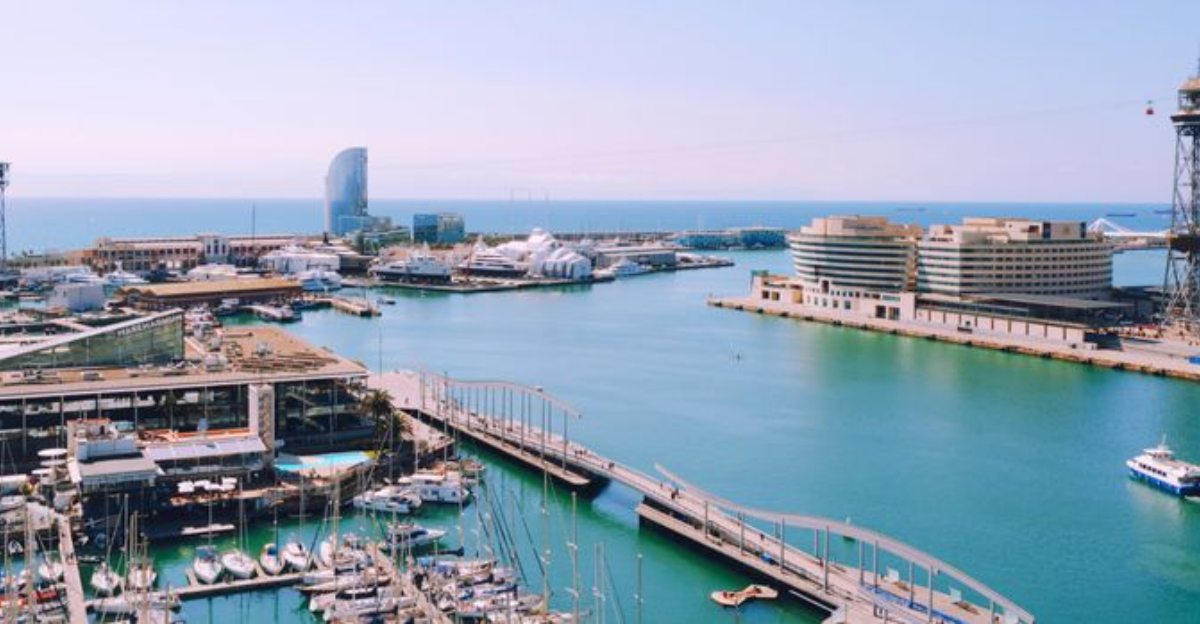
Think you’ve seen all Barcelona has to offer? Think again. While Sagrada Familia and La Rambla grab the headlines, the true magic of this city often lies in the places you don’t find on the postcards.
I’ve wandered through Barcelona’s backstreets, climbed tucked-away viewpoints, and stumbled into corners that most guidebooks skip—and let me tell you, that’s where the city really comes alive. Imagine sipping vermouth in a century-old bodega tucked behind a quiet plaza, or discovering a mosaic-filled courtyard with not a single selfie stick in sight.
Curious what locals do on a lazy Sunday? Or where to find a beach that’s blissfully free from sunbathing crowds? These 22 lesser-known gems peel back the touristy layer and reveal Barcelona’s soul—raw, creative, and full of character.
1. Bunkers del Carmel
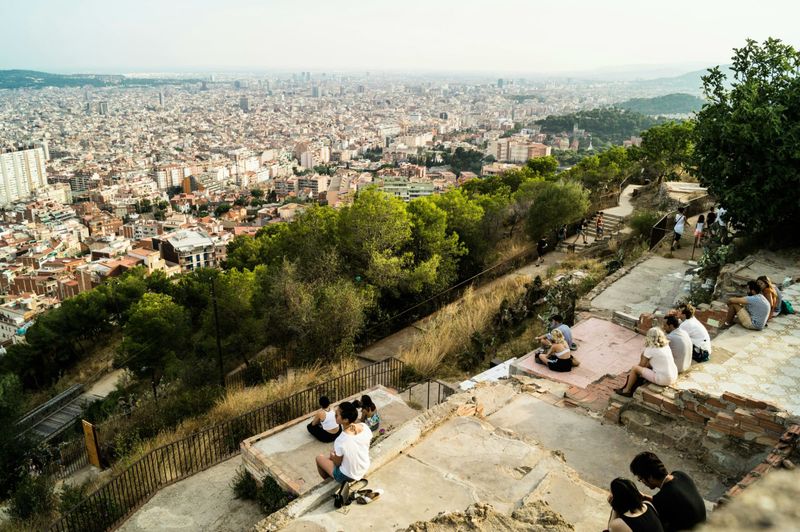
Perched high above the city, these former anti-aircraft bunkers from the Spanish Civil War now offer Barcelona’s most spectacular panoramic views. The journey up might leave you breathless, but the 360-degree vista will steal whatever breath you have left.
During sunset, locals gather with wine, guitars, and picnics to watch the city transform from bustling metropolis to twinkling wonderland. Unlike crowded Park Güell, this spot remains relatively undiscovered by tourist masses.
The concrete platforms where soldiers once stood guard now serve as perfect viewing platforms for photographers and romantics alike.
2. Hospital de Sant Pau
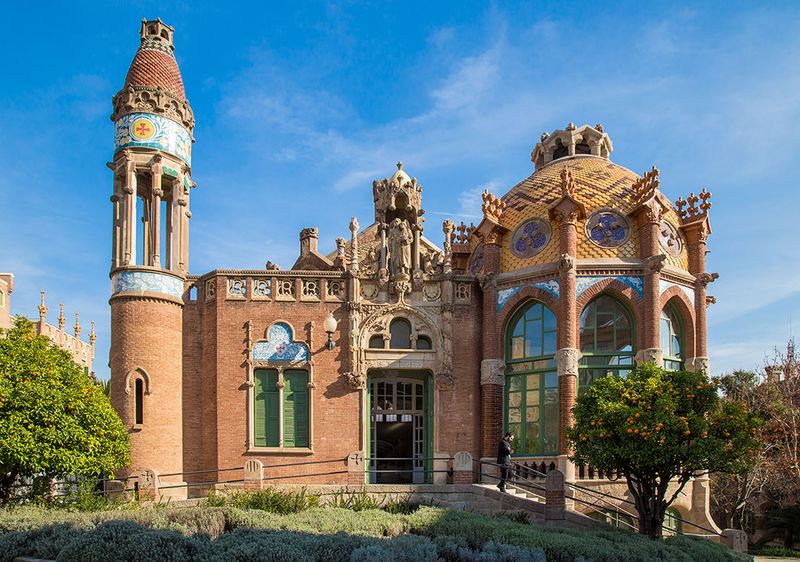
A UNESCO World Heritage site that stands in the shadow of its more famous neighbor, Sagrada Familia. This architectural masterpiece was designed by Lluís Domènech i Montaner and served as a functioning hospital until 2009.
Walking through its colorful pavilions feels like stepping into a fairytale. Intricate mosaics, stained glass windows, and sculptural details showcase Catalan Modernism at its finest, yet without the crushing crowds of Gaudí’s works.
Many visitors don’t realize this was intentionally designed as a healing space, with gardens between pavilions to give patients access to fresh air and sunlight.
3. El Born Cultural Center
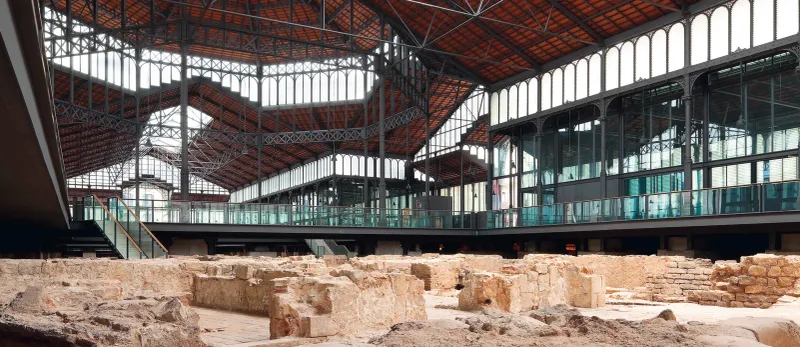
Hidden beneath a modernist iron market structure lies an archaeological wonder that tells Barcelona’s tragic history. When renovating the old market, workers discovered the remains of the neighborhood destroyed after the Siege of 1714.
Now preserved under glass, you can walk above the excavated streets and homes from the 1700s. This accidental time capsule offers a rare glimpse into everyday life before Catalan autonomy was crushed.
The center hosts fascinating exhibitions about Barcelona’s past while the surrounding Born district buzzes with trendy shops and tapas bars, creating a perfect blend of history and contemporary culture.
4. Laberint d’Horta Park
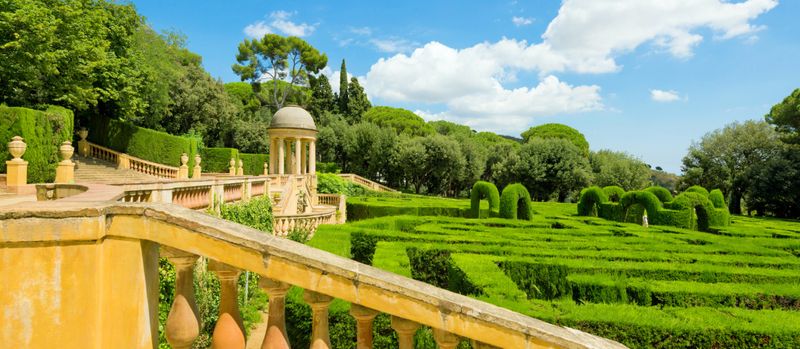
Barcelona’s oldest garden hides in the northern suburbs, far from tourist routes. At its heart stands a real hedge maze where locals play hide-and-seek among towering cypress walls.
Created in 1791 for the Desvalls family estate, this neoclassical garden blends romantic and neoclassical styles. Mythological statues, ornate fountains, and cascading terraces create a fairytale atmosphere where time seems to stand still.
The park limits daily visitors, maintaining its peaceful character. Film buffs might recognize it from scenes in Perfume: The Story of a Murderer, adding another layer of intrigue to this green sanctuary.
5. Plaça de Sant Felip Neri
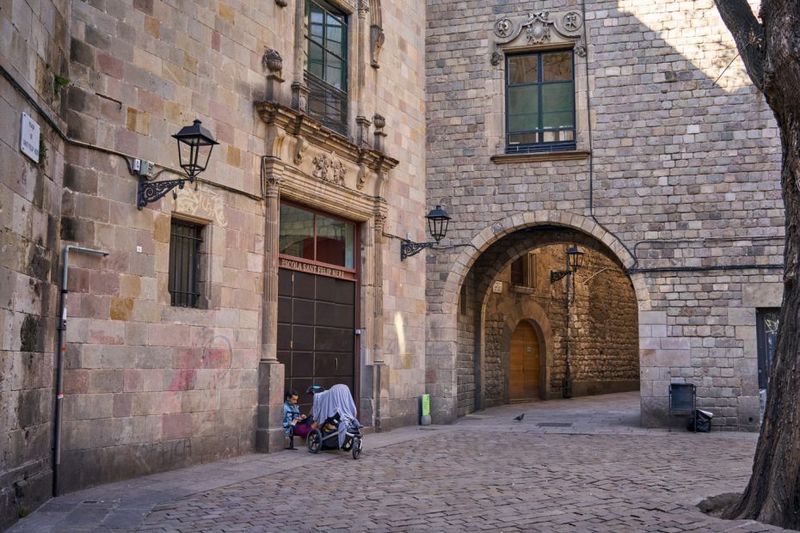
Tucked away in the Gothic Quarter, this tiny square carries Barcelona’s most haunting history. The pockmarked façade of its baroque church bears silent witness to a 1938 bombing that killed 42 people, mostly children from the nearby school.
Despite its tragic past, the square exudes tranquility. A fountain gurgles in the center while acacia trees provide dappled shade. Few tourists venture here, making it a contemplative escape from the nearby cathedral crowds.
Music lovers might recognize it as the backdrop for scenes in Woody Allen’s Vicky Cristina Barcelona, though its true significance runs much deeper in local memory.
6. Antic Teatre
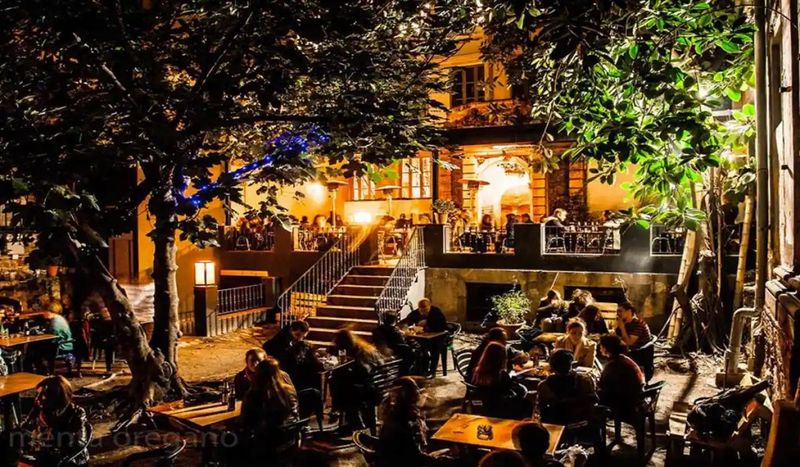
Behind an unassuming door near the Palau de la Música lies a 17th-century building housing Barcelona’s most vibrant independent arts venue. This former social club now serves as a cultural refuge where experimental theater, dance, and music flourish away from commercial pressures.
The real treasure is its ramshackle terrace bar, a secret garden oasis where artists, locals, and in-the-know travelers mingle under orange trees. Cold beers cost half what you’d pay on Las Ramblas, and the creative energy is priceless.
Shows here often push boundaries, reflecting Barcelona’s innovative spirit in ways big venues never could.
7. Carrer de les Aigües
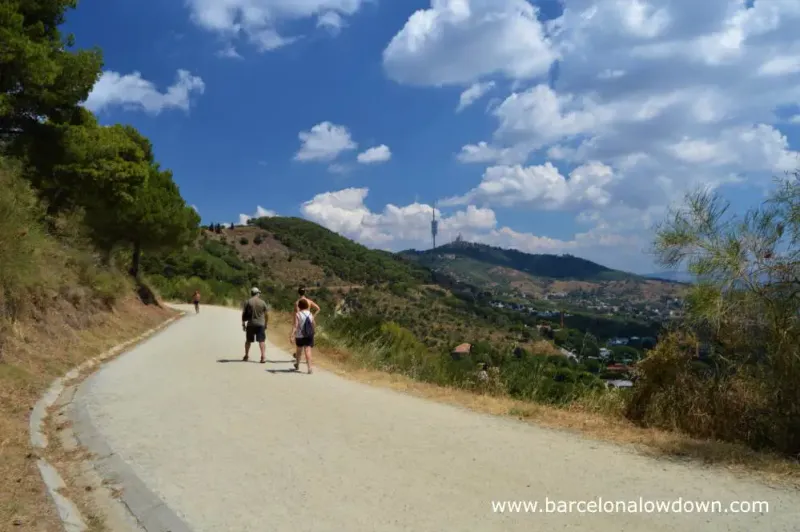
Nicknamed the ‘Highway in the Sky,’ this flat dirt path runs along the foothills of Collserola Park, offering spectacular city views without the uphill climb that other viewpoints demand. Originally built to maintain water pipes, it’s now a favorite route for local joggers, cyclists, and families.
The 10km trail provides ever-changing perspectives of Barcelona, from Tibidabo to the Mediterranean. On clear days, you can even spot Montserrat’s distinctive peaks in the distance.
Unlike tourist-heavy spots, here you’ll immerse yourself in local life, passing weekend picnickers and elderly couples taking their evening paseo as the city glimmers below.
8. MUHBA Refugi 307
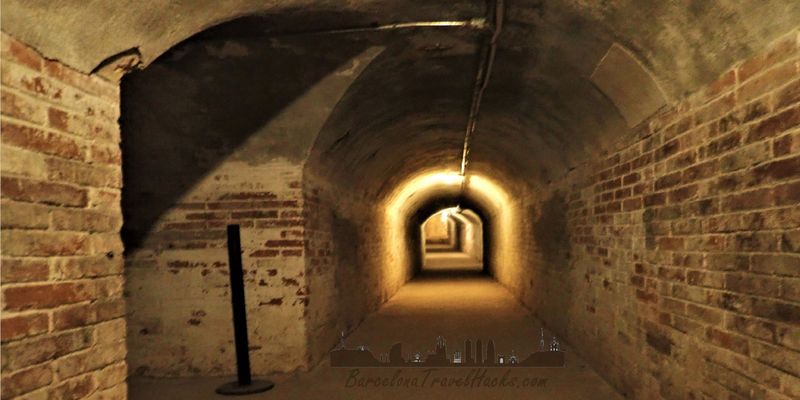
Beneath the streets of Poble-sec lies a sobering reminder of Barcelona’s darkest days. This preserved air raid shelter was one of hundreds hastily dug by civilians during the Spanish Civil War, when Barcelona became the first major European city to suffer aerial bombardment.
The narrow tunnels, basic medical facilities, and children’s area reveal ordinary people’s extraordinary response to terror from above. Unlike many historical sites, this one remains largely untouched, creating an immersive experience that brings history vividly to life.
Tours must be booked in advance but offer rare insight into civilian experiences of war that textbooks rarely capture.
9. Poble-sec Tapas Street
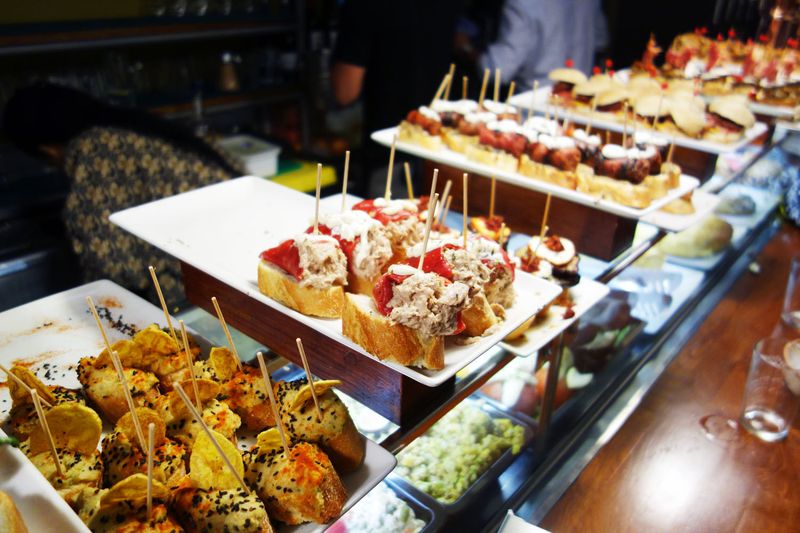
Carrer Blai slices through the working-class Poble-sec neighborhood, offering Barcelona’s best street for authentic tapas without tourist markup. This pedestrian-friendly avenue hums with local energy as residents hop between modest bars serving pintxos (small bites on toothpicks) for about €1 each.
Unlike the polished establishments in more central areas, these no-frills bars focus on flavor rather than presentation. The street comes alive after 8pm when Barcelonians begin their evening meals, creating a moveable feast as groups drift from one spot to another.
Eavesdrop on rapid-fire Catalan conversations while sampling local vermouth – you won’t find a more authentic Barcelona evening.
10. Jardins de Mossèn Costa i Llobera
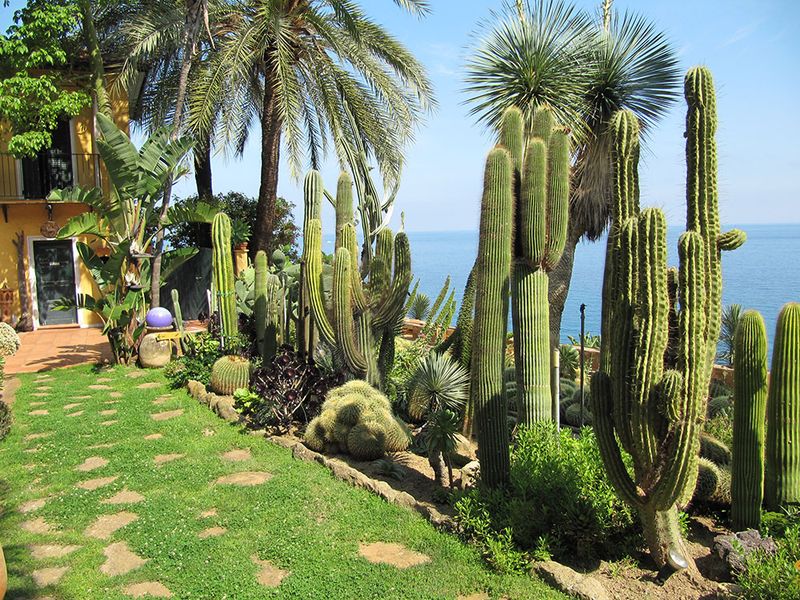
Clinging to Montjuïc’s steep southern face, this extraordinary garden specializes in cacti and succulents from around the world. The unusual location creates a microclimate that allows desert plants to thrive alongside Mediterranean views.
Terraced paths wind between spiky specimens, some over 200 years old. The garden’s position between major tourist sites means most visitors zoom past without noticing this botanical treasure with its dramatic clifftop setting.
Morning visits offer the best experience – you’ll likely have the place to yourself except for gardeners tending to the prickly collection, with cruise ships silently gliding into port far below.
11. Torre Bellesguard
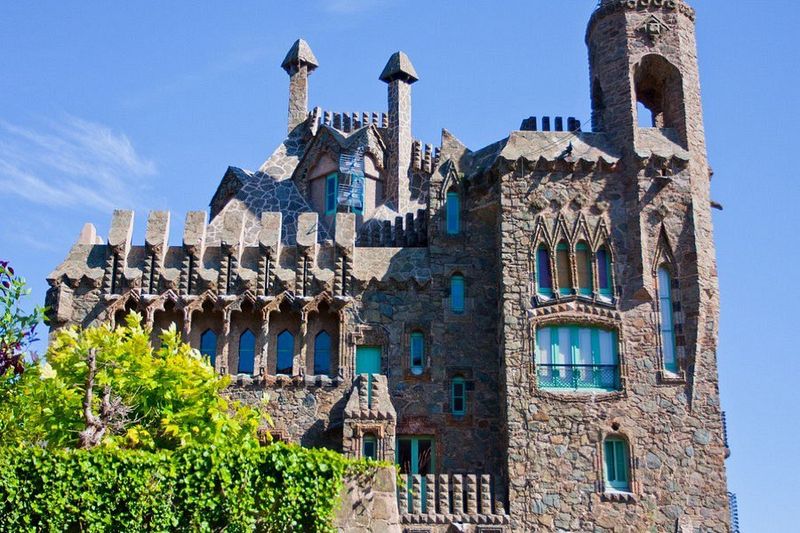
This castle-like masterpiece stands as one of Gaudí’s least-known works, hidden in the upscale Sarrià neighborhood. Built between 1900-1909, it blends Gothic and modernist styles to create what feels like a medieval fortress reimagined through Gaudí’s whimsical lens.
The building remains a private residence, but guided tours reveal stunning interiors and the fascinating story of Martin I, the last king of the Catalan dynasty who once lived on this site. Dragon-scale roofs and twisted chimneys showcase Gaudí’s signature style without Sagrada Familia’s overwhelming crowds.
The name means ‘beautiful view’ in Catalan, and the panorama from its gardens proves the moniker perfectly apt.
12. Palo Alto Market
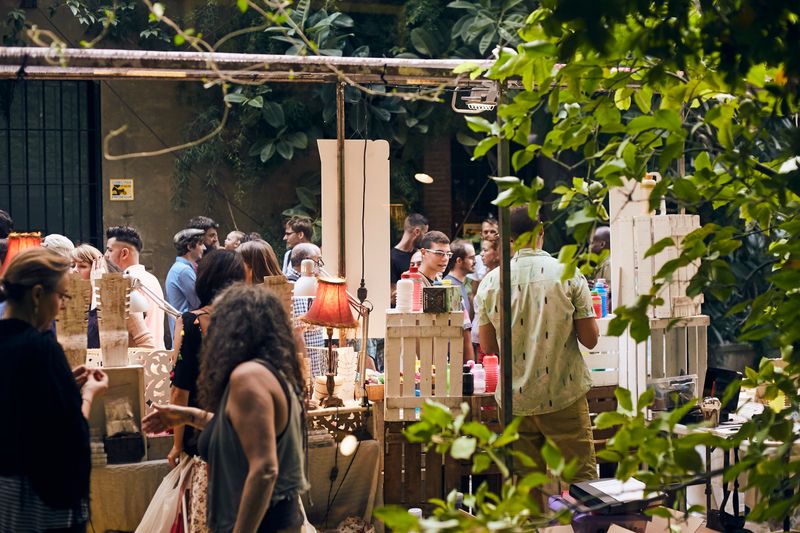
Once a month, a 19th-century factory complex in Poblenou transforms into Barcelona’s hippest gathering of creators and makers. This industrial space with exposed brick and climbing ivy hosts the city’s most exciting blend of design, gastronomy, and music.
Unlike tourist markets, Palo Alto showcases genuine local talent – emerging fashion designers, craft brewers, and innovative chefs all converge in this creative playground. Vintage furniture vendors and artisanal food trucks fill the courtyard while DJs provide the soundtrack.
The market represents Barcelona’s successful transition from industrial past to creative future. Check their website for dates, as this monthly event requires advance tickets that often sell out.
13. Casa Vicens
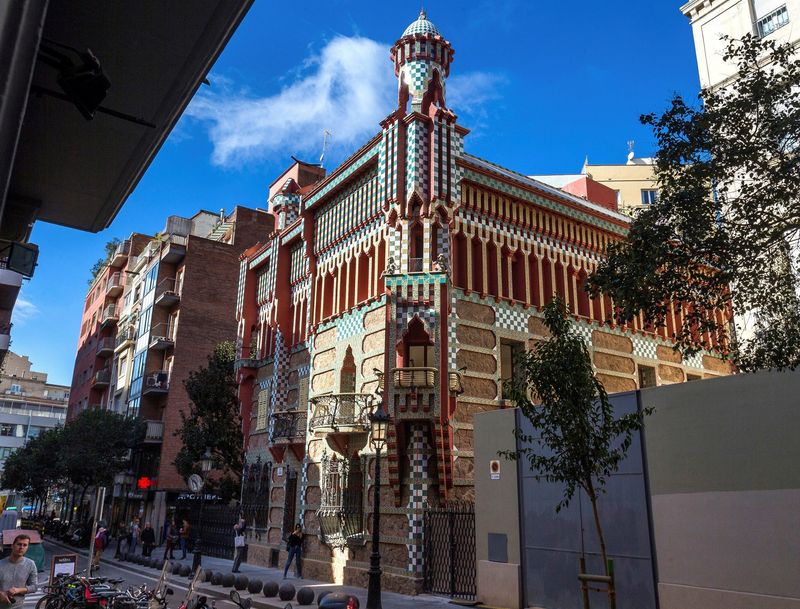
Gaudí’s first major commission recently opened to the public after decades as a private residence. This early work shows the young architect finding his voice, blending Moorish influences with his emerging modernist vision.
Built as a summer home in the 1880s, Casa Vicens explodes with color and pattern. Geometric tiles, iron sunflowers, and painted ceilings reveal Gaudí before he developed his famous organic style. The intimate scale offers a completely different experience from his more famous buildings.
Located in the charming Gràcia neighborhood, visitors can combine this hidden gem with exploration of local plazas where residents gather for evening chats rather than tourist photographs.
14. Fabra Observatory
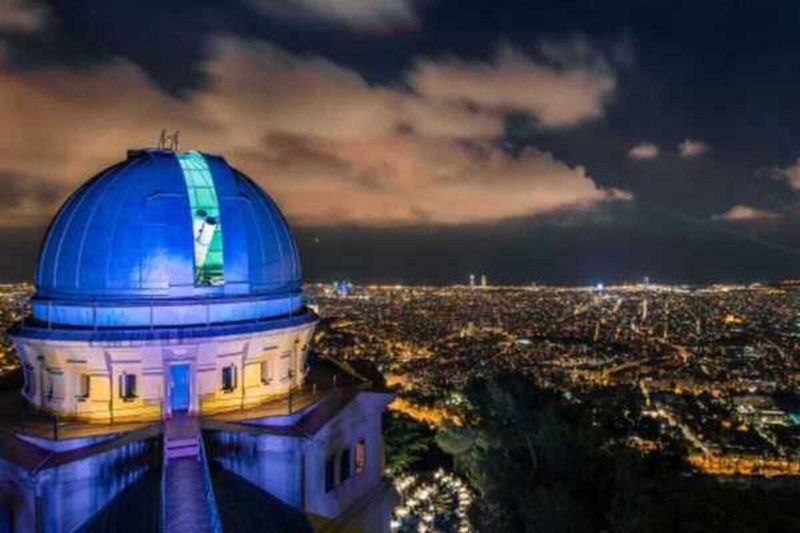
Perched high on Tibidabo mountain since 1904, this working observatory offers something truly unique: dinner under the stars followed by celestial observation through a historic telescope. The ‘Sopars amb Estrelles’ (Dinners with Stars) program runs summer nights on the observatory’s terrace.
As Barcelona glitters below, astronomers guide you through the universe above. The century-old telescope still functions perfectly, revealing Saturn’s rings and Jupiter’s moons against the dark Mediterranean sky.
Advance booking is essential for this magical experience that combines gourmet cuisine, science, and unparalleled city views. Even non-astronomy enthusiasts find themselves mesmerized by this perspective on Barcelona – both earthly and cosmic.
15. Sant Andreu District
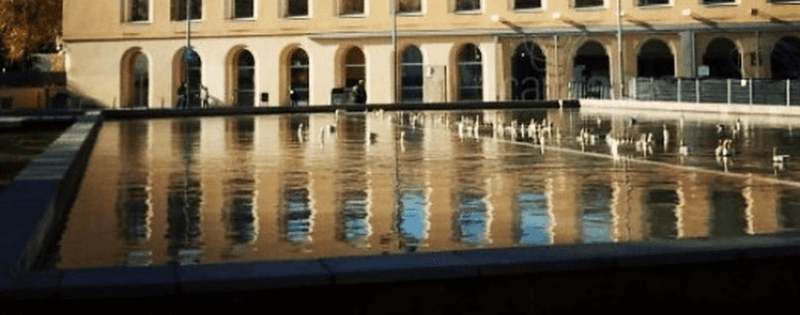
Once an independent town before Barcelona’s expansion, Sant Andreu retains its distinct village character despite being just 15 minutes by metro from the city center. The pedestrianized main street, Carrer Gran de Sant Andreu, feels like stepping into authentic Catalan life untouched by tourism.
Locals shop at traditional businesses – the knife sharpener, the basket weaver, the century-old pastisseria. On weekends, the Plaça del Comerç fills with families as children play and grandparents chat on benches beneath orange trees.
The modernist Church of Sant Andreu del Palomar stands as the neighborhood’s heart, while small bars serve vermouth with complimentary tapas just as they have for generations.
16. Mercat de Sant Antoni
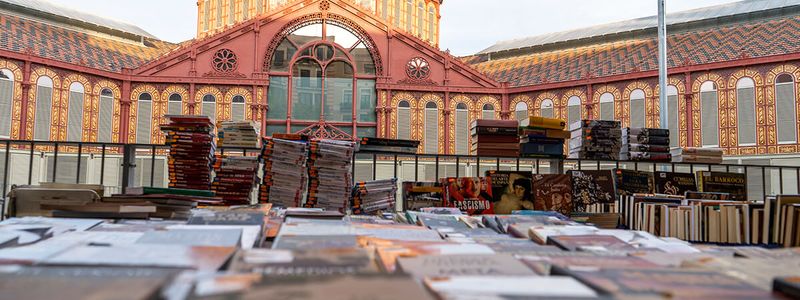
Recently renovated after nine years, this 19th-century market building has reclaimed its place as a neighborhood hub while remaining off most tourist itineraries. The octagonal modernist structure houses food vendors inside, but the real treasure appears on Sunday mornings around its perimeter.
Barcelona’s oldest book market transforms the surrounding streets into a bibliophile’s paradise. Hundreds of stalls sell secondhand books, vintage comics, and collectible stamps. Though most materials are in Catalan or Spanish, the atmosphere needs no translation.
After browsing, join locals at the market’s corner bars for vermut amb olives (vermouth with olives) – a Barcelona Sunday tradition that tourists rarely experience.
17. Jardins del Teatre Grec
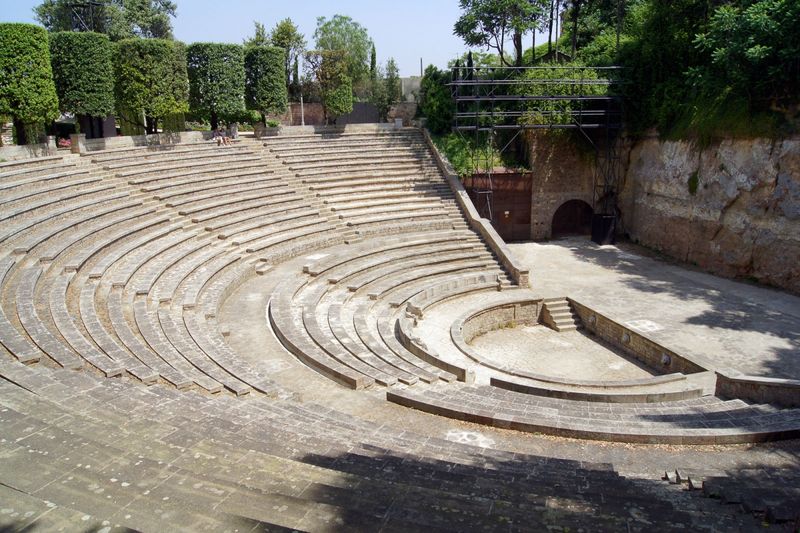
Montjuïc mountain harbors this peaceful garden built around an open-air theater modeled after ancient Greek amphitheaters. Created for the 1929 International Exhibition, the space now hosts summer performances during the Festival Grec, Barcelona’s major performing arts event.
Even outside festival season, the gardens offer a tranquil retreat with Mediterranean plants arranged in terraces. Stone paths lead through pergolas draped with wisteria, past reflecting pools, and alongside fragrant herb gardens.
The amphitheater itself provides an impressive backdrop for photos without other tourists in frame – a rarity in Barcelona. From here, you can continue exploring Montjuïc’s less-visited corners while most visitors cluster around the Magic Fountain area.
18. Biblioteca Arús
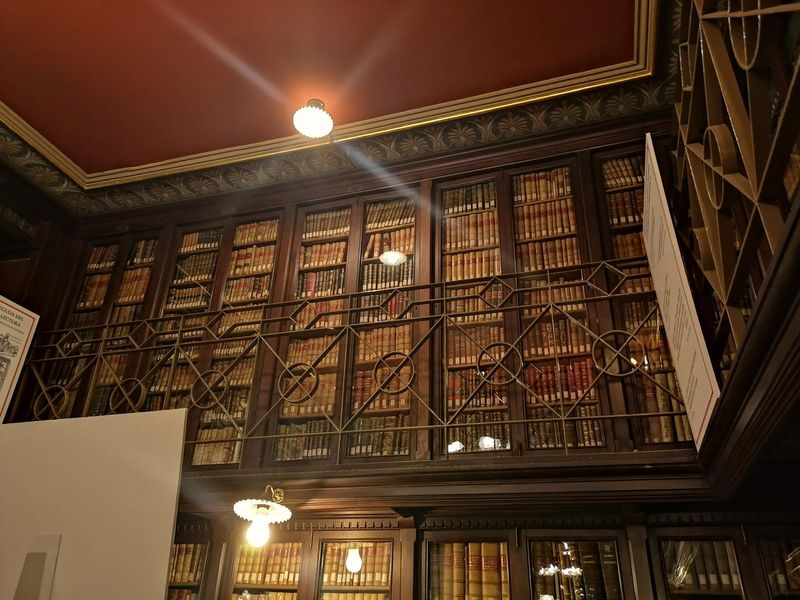
Behind an elegant façade in the Eixample district lies one of Barcelona’s most fascinating libraries. Founded in 1895 by Rossend Arús, a progressive Freemason, this unique collection specializes in labor movements, anarchism, and Freemasonry.
The reading room dazzles with its original wooden furnishings and spiral staircases. A full-size replica of the Statue of Liberty (one of few in Europe) guards the entrance, reflecting the founder’s democratic ideals.
Though primarily a research library, visitors can arrange tours to admire the historic interior and glimpse rare materials, including the world’s largest collection on Sherlock Holmes in Spanish. The knowledgeable staff reveals the library’s connections to Barcelona’s revolutionary past.
19. Cementiri de Poblenou
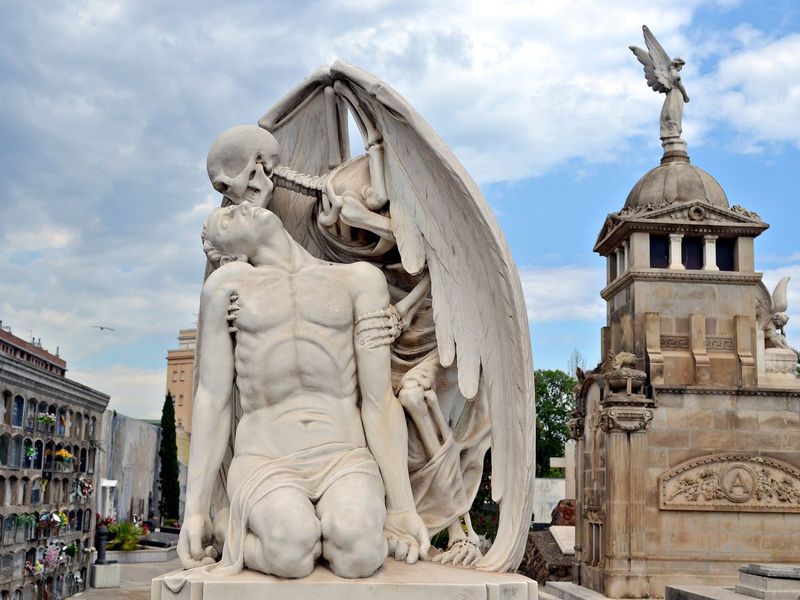
While cemetery visits might seem unusual, this 19th-century ‘city of the dead’ ranks among Barcelona’s most beautiful and least visited monuments. Marble sculptures of weeping angels and elaborate family tombs create an open-air museum of funerary art.
The most famous monument, ‘El Petó de la Mort’ (The Kiss of Death), depicts a winged skeleton kissing a young man’s forehead – a hauntingly beautiful meditation on mortality that draws art historians and photographers.
Organized in straight avenues like a miniature city, the cemetery tells Barcelona’s history through the names and dates of its residents. Morning visits offer golden light streaming through cypress trees in almost complete solitude.
20. El Bosc de les Fades
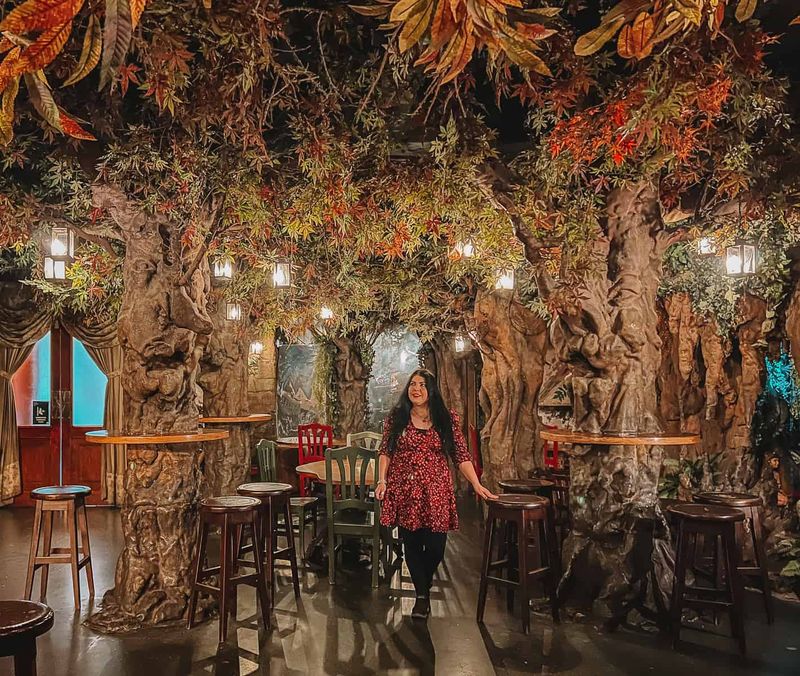
Tucked beside the Wax Museum near La Rambla hides Barcelona’s most fantastical café. ‘The Fairy Forest’ transports visitors to an enchanted woodland complete with gnarled trees, twinkling lights, and the occasional thunderstorm effect.
Artificial trees create cozy nooks where you can sip cocktails or hot chocolate surrounded by fairy houses and woodland creatures. The imaginative setting attracts both locals and visitors seeking respite from Barcelona’s urban energy.
Despite its central location, many tourists walk right past its unassuming entrance. The café offers a whimsical break from sightseeing and makes a perfect spot for unique photos that will have friends asking, “Where was that?”
21. Montjuïc Cemetery Viewpoint
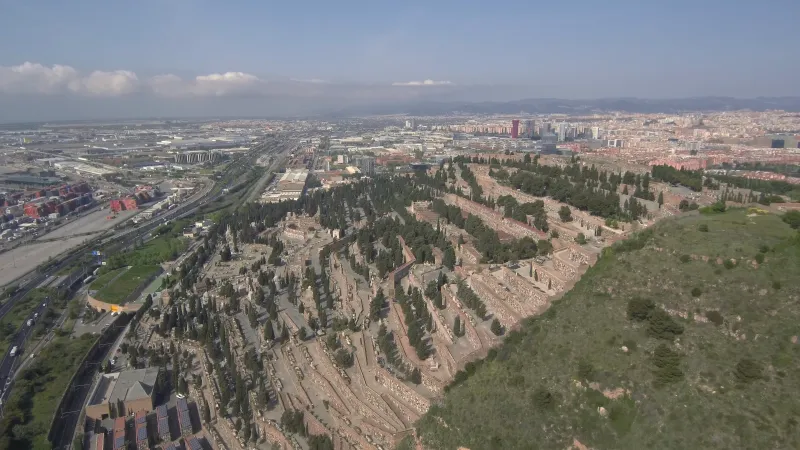
Far above the city, where few tourists venture, lies a hidden mirador (viewpoint) offering Barcelona’s most dramatic coastal panorama. Located near the entrance to Montjuïc Cemetery, this forgotten lookout provides sweeping views from the port to the Besòs River.
Unlike other viewpoints, you’ll rarely share this space with more than a couple of local photographers or romantic couples. The cemetery itself, with its modernist mausoleums cascading down the hillside, adds a poignant foreground to the vast Mediterranean beyond.
Morning fog often creates a mystical atmosphere as container ships glide silently into the harbor below. The location feels worlds away from Barcelona’s busy center despite being just a short bus ride.
22. Port Vell Hidden Boardwalk
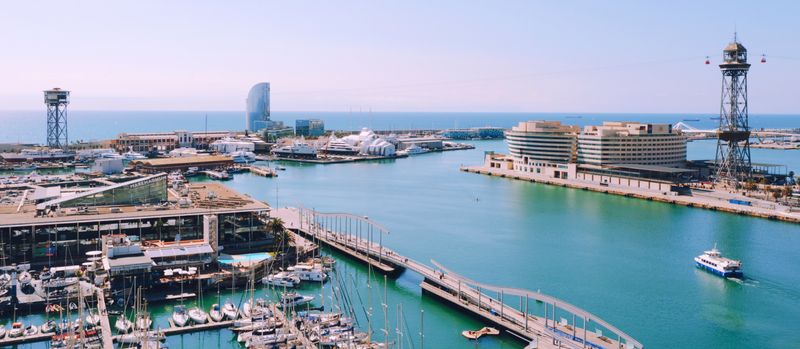
While tourists crowd the main Barceloneta boardwalk, locals know to continue walking past the W Hotel to discover a peaceful wooden walkway extending into the Mediterranean. This lesser-known extension provides uninterrupted sea views without the vendors and crowds.
Morning visitors might spot elderly Catalans practicing tai chi or fishermen trying their luck in the crystal waters. The boardwalk terminates at a small lighthouse, creating perfect photo opportunities of Barcelona’s coastline from a different perspective.
Benches along the route invite relaxation with the soundtrack of gentle waves. This tranquil spot feels miles from the busy beaches yet lies just minutes beyond where most visitors turn back.
